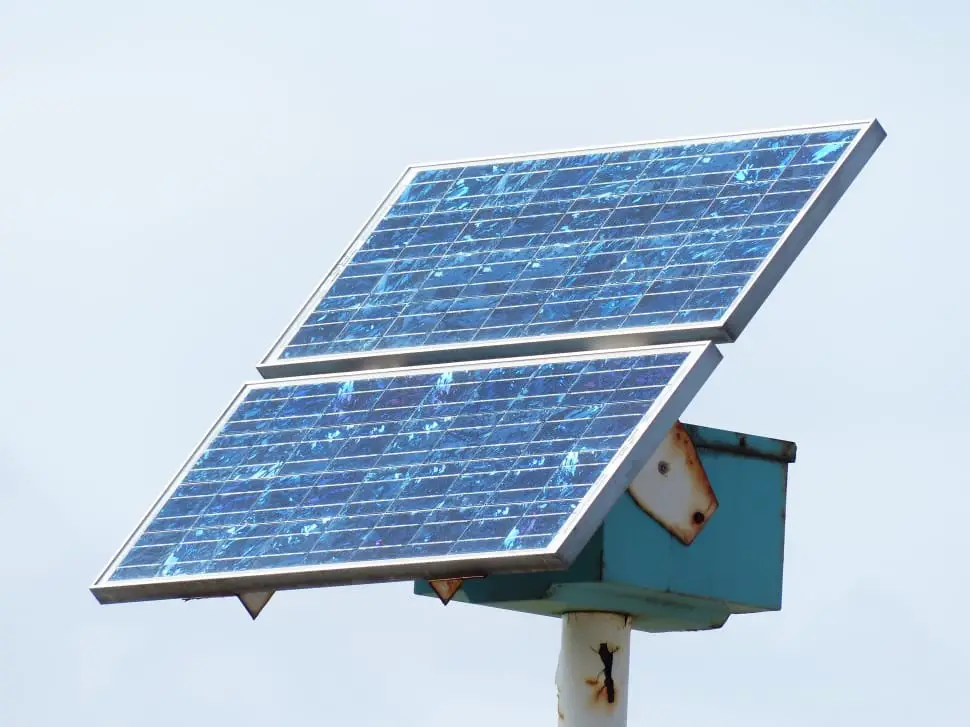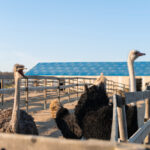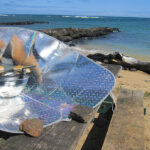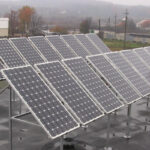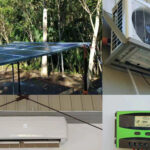Solar panels are an excellent source of renewable energy, providing a clean and sustainable way to power our homes and businesses. However, there’s a peculiar issue that has been observed on some solar panels – snail trails. Yes, you read that right! Snails have been found leaving their slimy trails on solar panels, which can be quite puzzling for homeowners and solar panel installers. In this blog post, we will delve into the mystery of snail trails on solar panels, explore what causes them, and discuss how they can affect the performance of your solar panels. Additionally, we’ll provide some practical tips on how to prevent snail trails on solar panels.
What is a Snail Trail on a Solar Panel?
A snail trail on a solar panel is a curious phenomenon that results from the interaction between snails and the surface of solar panels. To paint a clearer picture, imagine the intricate silver pathways left behind by snails as they traverse across the glass surface of a solar panel. These pathways might resemble delicate, abstract patterns etched onto the panel, but the reality is less picturesque. Snail trails are formed from a combination of snail mucous and the dirt or debris present on the panel’s surface. As snails crawl in search of nocturnal sustenance, they inadvertently leave behind these slimy tracks, creating a visible and often artistic design on the panel’s surface.
What Causes Snail Trails on Solar Panels?
Snail trails on solar panels are more common than you might think, especially if you live in areas with high humidity or near vegetation. Here are some possible reasons why snails are drawn to solar panels:
- Moisture: Snails need moisture to survive, and solar panels can provide an ideal environment for them. The glass surface of the panels can retain dew or rainwater, creating a perfect habitat for snails.
- Shade: Snails prefer cool, dark places, and the underside of solar panels can offer just that. As the sun heats up during the day, the area underneath the panels can remain relatively cool, attracting snails seeking refuge from the heat.
- Food sources: Algae, lichen, or other microorganisms can grow on solar panels, particularly in areas with poor air circulation. Snails feed on these organisms, which can draw them to the surface of the panels.
Does Snail Trails on Solar Panels Affect Output/Performance?
The seemingly innocuous presence of snail trails on solar panels can indeed have a tangible impact on their overall performance. Solar panels are designed to capture and convert sunlight into energy through photovoltaic cells. However, when snail trails accumulate on the panel’s surface, they can create obstacles that hinder the direct penetration of sunlight. This shading effect reduces the amount of sunlight reaching the solar cells, thereby decreasing the panel’s energy generation potential. Moreover, the accumulation of dirt and debris within these trails can lead to hotspots on the panel, causing localized overheating and further reducing energy output. Thus, snail trails can contribute to decreased efficiency and lower overall energy production.
How to Stop Snail Trails on Solar Panels?
Fortunately, preventing snail trails on solar panels is relatively easy. Here are some effective methods to keep your solar panels snail-free:
Clean your Solar Panels Regularly
One of the most effective ways to prevent snail trails is to regularly clean your solar panels. You can use a soft-bristled brush, water, and a mild soap solution to gently scrub the panels. Be sure to avoid using harsh chemicals or abrasive materials that could damage the panels. By removing dirt and debris, you’ll reduce the likelihood of snails being attracted to the area.
Trim Nearby Vegetation
Snails are often found in areas with dense vegetation, so trimming back trees, bushes, and other plants near your solar panels can help discourage them from venturing into the area. Keeping the surrounding area well-maintained and free of debris will also make it less hospitable to snails.
Seal the Edges
Snails can crawl underneath solar panels through small openings, so sealing the edges is an effective way to prevent them from entering. Apply silicone caulk or weatherstripping around the edges of the panels to create a barrier. Make sure to check the manufacturer’s instructions before applying any sealants to ensure they won’t damage the panels.
Install a Snail Guard for Solar Panels
A snail guard is a physical barrier that fits over the solar panel frames, preventing snails from crawling underneath. These guards come in different styles and materials and can be easily installed by a professional. Some snail guards are designed to allow for easy cleaning and maintenance of the panels while keeping snails out.
Relocate your Solar Panels (if necessary)
If your solar panels are located in an area where snails are particularly prevalent, consider relocating them to a spot that’s less hospitable to snails. This may involve adjusting the angle or orientation of the panels or moving them to a location with better drainage. Keep in mind that this method may not always be practical or feasible, but it’s worth considering if you’re experiencing persistent problems with snail trails.
Elevate your Solar Panels
Installing your solar panels at a higher elevation can make it more challenging for snails to reach them. This can be achieved by using longer mounting brackets or by installing the panels on a sloping roof. While this method may not eliminate snail trails entirely, it can reduce the frequency of infestations.
Use a Physical Barrier
In addition to sealing the edges, you can create a physical barrier around the entire solar panel array using a material that snails won’t be able to climb. Copper is a popular choice, as snails don’t like to cross over it. You can attach strips of copper to the ground around the perimeter of the panels or use a plastic mesh screen with small holes that snails can’t fit through.
Plant Snail-repellent Plants
Certain plants, such as marigolds, chives, and garlic, have natural properties that repel snails. Planting these around the base of your solar panels may help keep snails away. While this method isn’t foolproof, it’s a non-toxic and environmentally friendly approach to managing snail populations.
Use Diatomaceous Earth
Diatomaceous earth is a fine powder composed of the fossilized remains of tiny aquatic organisms called diatoms. When sprinkled around the base of your solar panels, it creates a barrier that snails won’t be able to cross. The sharp edges of the diatomaceous earth particles cut through the snails’ skin, dehydrating them and causing them to die. However, be aware that this method can harm beneficial insects, too, so use it sparingly and only where necessary.
Set up a Snail Trap on Solar Panels
Create a snail trap by placing a shallow tray filled with beer or a mixture of yeast and sugar beneath your solar panels. The yeast fermentation process releases carbon dioxide, which attracts snails. The beer acts as a trap, drowning the snails. Empty the tray regularly to ensure the trap remains effective. While this method may not eliminate all snails, it can help reduce their population around your solar panels.
Conclusion
Preventing snail trails on solar panels is a proactive endeavor that involves a combination of approaches. By implementing physical barriers, encouraging natural predators, maintaining regular cleaning routines, and considering chemical-free repellents, you can minimize the presence of snail trails and their potential impact on energy production. Each of these strategies contributes to ensuring the optimal efficiency and longevity of your solar panels, allowing them to continue harnessing the power of the sun in a cleaner and more sustainable manner.
To Read More Info on Solar Panels and Solar Energy go through our BLOG section.

